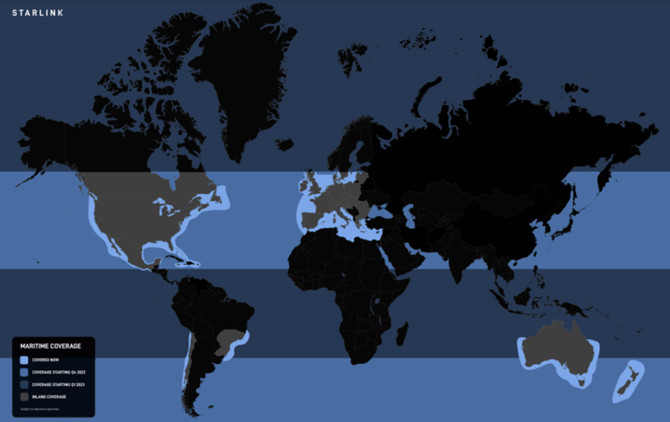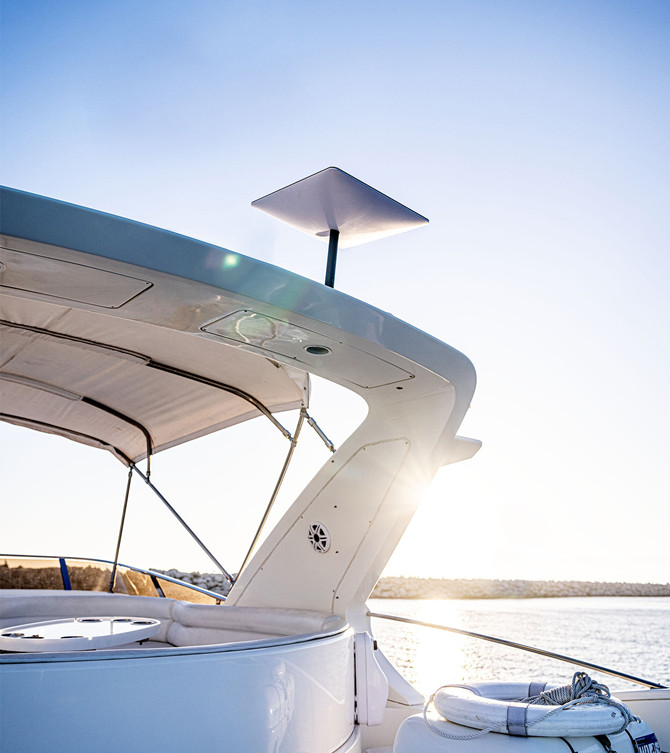The satellite-delivered broadband service promises “high-speed, low-latency internet with up to 350 Megabits per second download while at sea”, although customers have already noted that the new service is not the cheapest on the market.
The hardware alone – including pipe adapter mounts – will cost $10,000 to be paid upfront. The service itself will cost $5,000 a month.
While the price is high, SpaceX has argued that this is cheaper than traditional very small aperture satellite (VSAT) internet services.
The company added that customers will have the option to upgrade from the current fixed dish units to a flat panel antenna in Q4 2022.
SpaceX Chief, Elon Musk, explained on his social channels that Starlink Maritime's antennae differ from their residential counterpart, as in they're “dual, high performance terminals” and have the power to maintain connection in extreme weather conditions.
As far as coverage, the majority of world's oceans will get it in the fourth quarter of 2022, whilst the rest of the planet will get coverage in the first quarter of 2023.
The service currently covers US coastal waters (excluding Alaska), Europe (except most of Norway, Sweden and Finland), Australia, Brazil, Chile, most of the Southern part of Australia and New Zealand.

Starlink Maritime
SpaceX first filed an application to operate mobile earth stations on vessels and other moving vehicles in March 2021.
The Starlink satellites seek to extend broadband connection to users in rural and internet-poor locations.
Source: Port Technology
The opinions expressed herein are the author's and not necessarily those of The Xinde Marine News.
Please Contact Us at:
media@xindemarine.com



 Ningbo Containerized Freight Index Weekly Commentar
Ningbo Containerized Freight Index Weekly Commentar  Ningbo Containerized Freight Index Weekly Commentar
Ningbo Containerized Freight Index Weekly Commentar  Ningbo Containerized Freight Index Weekly Commentar
Ningbo Containerized Freight Index Weekly Commentar  BIMCO Shipping Number of the Week: Bulker newbuildi
BIMCO Shipping Number of the Week: Bulker newbuildi  Ningbo Containerized Freight Index Weekly Commentar
Ningbo Containerized Freight Index Weekly Commentar  Ningbo Containerized Freight Index Weekly Commentar
Ningbo Containerized Freight Index Weekly Commentar